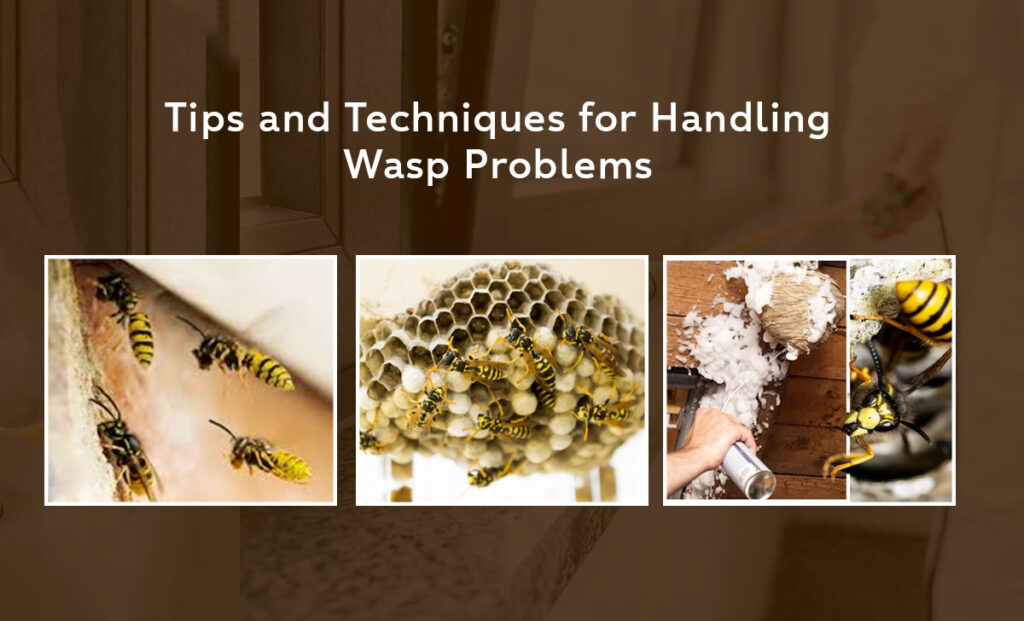Wasps are flying insects that belong to the Hymenoptera order and are closely related to bees and ants. They are characterized by their slender bodies, narrow waists, and two pairs of wings. While some species of wasps are solitary, others form colonies and build nests.
Wasps can become a problem for several reasons:
Aggressive Behavior: Certain species of wasps, such as yellow jackets and hornets, can exhibit aggressive behavior, especially when their nests are disturbed. They may perceive humans or animals as threats and respond by stinging, which can cause pain, swelling, and, in some cases, severe allergic reactions.
Wasp Stings: When a wasp stings, it injects venom into its victim. The venom can cause localized pain, redness, and swelling at the sting site. For individuals with allergies to wasp venom, a sting can trigger a severe allergic reaction known as anaphylaxis, which requires immediate medical attention.
Nesting Sites: Wasps often build their nests in or around human structures, including attics, eaves, trees, and shrubs. Their presence near residential areas can pose a threat to people, especially those who are allergic to wasp stings.
Food Interference: Some wasps are attracted to human food and beverages, particularly those rich in sugars. Their presence can be a nuisance during outdoor activities, picnics, or gatherings, as they may disrupt meals and become a persistent annoyance.
Population Growth: Wasp colonies can grow rapidly, with the number of individuals increasing throughout the summer months. Large populations of wasps can become overwhelming, making outdoor spaces uncomfortable and potentially hazardous.
There are various types of wasps that can be encountered, each with its own characteristics and behavior. Here are some common types of wasps:
Yellow Jackets: Yellow jackets are small wasps known for their yellow and black striped bodies. They are often found near human habitation and can build nests in the ground, trees, or structures. Yellow jackets are known for their aggressive behavior and can sting repeatedly.
Hornets: Hornets are larger wasps that are typically brown or black with yellow or white markings. They construct large nests in trees, shrubs, or buildings. Hornets can be defensive of their nests and may sting if they feel threatened.
Paper Wasps: Paper wasps have slender bodies and long legs, and they are known for building open, umbrella-shaped nests. They are often found hanging from eaves, branches, or other protected areas. Paper wasps can be territorial and may sting if they perceive a threat to their nest.
Mud Daubers: Mud daubers are solitary wasps that construct nests made of mud. They are usually non-aggressive and rarely sting unless directly handled or threatened. Mud daubers are beneficial as they help control other insect populations.

Signs of a wasp problem may include:
- Frequent Sightings: If you notice an increased number of wasps in and around your property, it could indicate a nearby nest or a larger wasp population.
- Wasp Nests: The presence of a visible nest is a clear sign of a wasp infestation. Nests can be found in various locations, including trees, bushes, eaves, attics, or wall voids. Different wasp species construct different types of nests, ranging from papery structures to underground burrows.
- Aggressive Behavior: If you experience wasps displaying aggressive behavior, such as repeatedly flying near or stinging humans or animals, it may indicate a nearby nest that they are protecting.
- Wasp Activity Patterns: Wasps are most active during the warmer months, so an increase in wasp activity during this time could be an indication of a nest nearby.
- Chewed Wood or Holes: Certain types of wasps, such as carpenter wasps, chew wood to create nests. If you notice small holes or sawdust-like material near wooden structures, it could be a sign of their activity.
If you observe any of these signs, it is advisable to seek professional wasp control and nest removal services.
Final Words
In conclusion, if you find yourself dealing with a wasp problem, it is crucial to take appropriate action to ensure the safety and comfort of yourself and others. Here’s what you should do:
Stay Calm and Avoid Provoking Wasps: If you encounter wasps, remain calm and avoid sudden movements or swatting at them. Aggressive behavior or provocation can increase the likelihood of being stung.
Assess the Severity of the Infestation: Determine the extent of the wasp infestation by identifying any visible nests, observing wasp activity patterns, and assessing the level of nuisance or danger they pose.
Seek Professional Wasp Control Services: For effective and safe management of a wasp problem, it is highly recommended to enlist the help of professional wasp control services. Trained technicians have the expertise, equipment, and knowledge to handle wasp infestations and safely remove nests.
Remember, wasp stings can be painful and, in some cases, pose a severe risk, especially for individuals with allergies. By entrusting the task to professionals, you can ensure a safe and effective resolution to your wasp problem, allowing you to enjoy your surroundings without the worry and inconvenience of these stinging insects.






